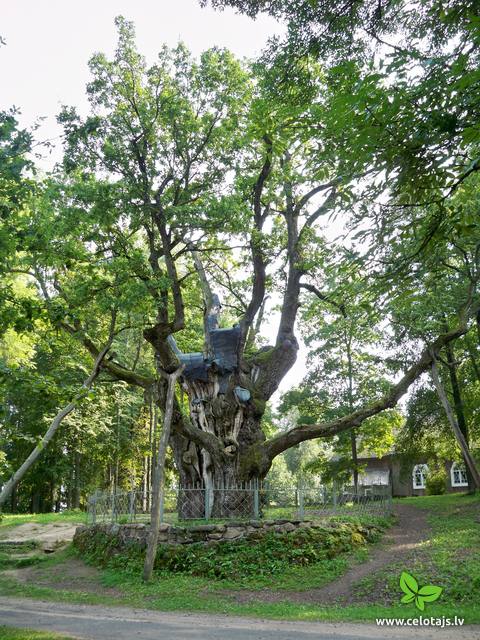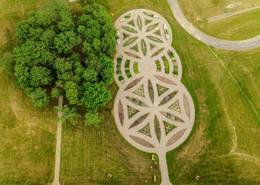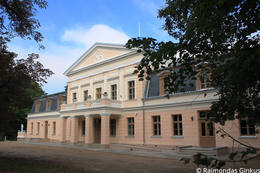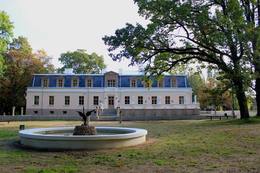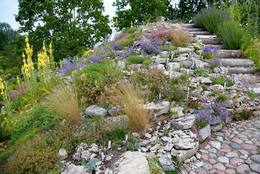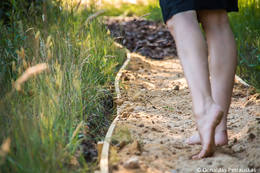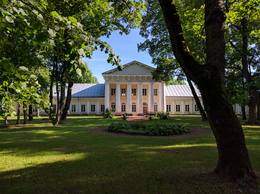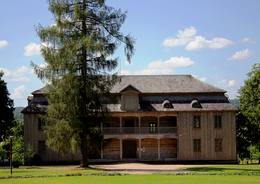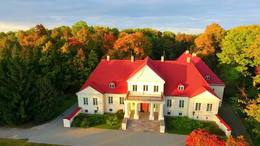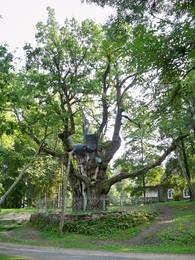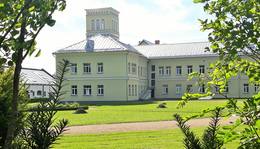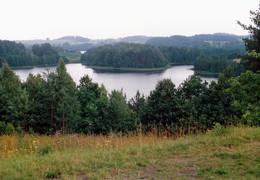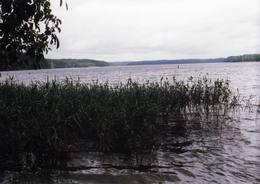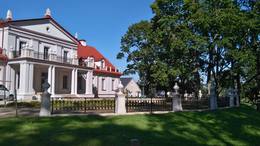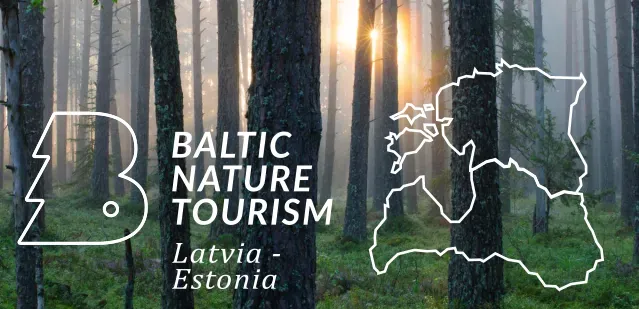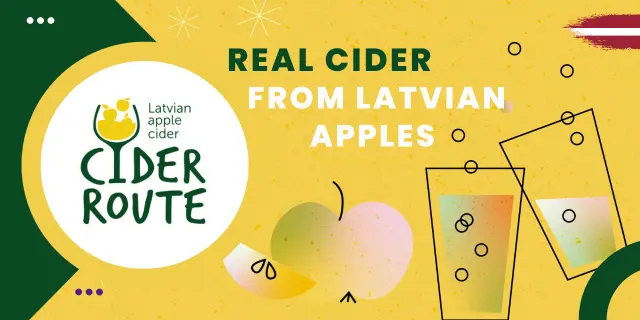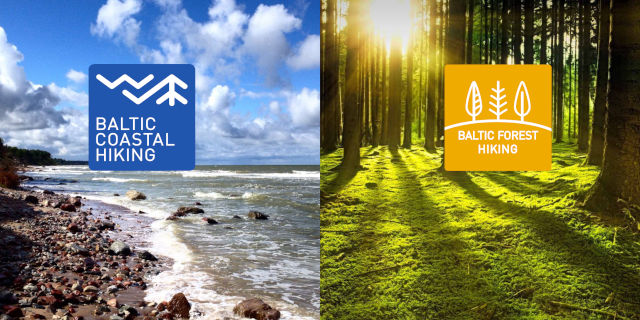Природные объекты в Литве
Что особенного в природе в Литве?
Куршская коса - песчаный, пустынный участок земли между Балтийским морем и Куршским заливом, холмистые ландшафты Жемайтийского региона, голубые зеркальные лабиринты озер в Аукштайтийском регионе, сосновые леса в Дзукийском регионе, Изгибы долины реки Немана и многочисленные региональные природные парки, созданные не только для защиты природы, но и для отдыха и интереса людей - это природные ценности, привлекающие гостей Литвы.
Действуй ответственно - следуй Зеленому совету!
| Обзор | Подробности |
|---|---|
|
Литва
Negelsches Naturreservat (Naglių rezervatas)Die Dünen nördlich Pervalka über dem ehemaligen Dorf Negeln. Eine 9 km lange Strecke mit den wüstenartigen Landschaften. Stegpfade. |
|
|
Литва
Cepkelu purvs (Cepkelių raistas)Lietuvas lielākais sūnu purvs, kura aizsardzības nolūkā ir izveidots Čepkeļu dabas rezervāts (Čepeklių gmatinis rezervatas). Tas izvietojies starp Dzūkijas nacionālā parka dienvidaustrumu daļu un Baltkrieviju. No Marcinkones pa smilšainu meža ceļu (~ 9 km turp - atpakaļ) ar kājām vai divriteni (arī nelielu tūrisma autobusu līdz 20 vietām) var nokļūt līdz purva malai, kur mežainās kāpās un purvā izveidota 1,5 km gara dabas taka un skatu tornis, no kura labi pārredzama purva rietumdaļa. Pirms došanās uz Čepkeļu purvu, ir jāreģistrējas Dzūkijas nacionālā parka apmeklētāju centrā (Šilagėlių gatve 11), kas meklējams aiz dzelzceļa pārbrauktuves. Te apskatāma neliela nacionālajam parkam un rezervātam veltīta ekspozīcija. |
|
|
Литва
The Zemaitija National ParkThis park is located in the northern part of the Žemaitija Highlands, and much of it is taken up by Lake Plateliai. The park was established to protect lakes, rivers, wetlands and forest ecosystems, as well as the local cultural environment.
|
|
|
Литва
МУЗЕЙ БАЛТИЙСКИХ ТРАВВ 2014 г. при посредничестве Ботанического сада Шяуляйского университета был основан Музей генофонда балтийских растений. Посетителей ждет объект площадью 0,34 га, длиной 85 м и шириной 40 м. |
|
|
Литва
ПАРК УСАДЬБЫ ЖАГАРЕПарк усадьбы Жагаре — один из самых красочных и с архитектурной точки зрения интересных парков в Литве. В 1898–1900 гг. усадебный парк был реконструирован и расширен по проекту известного дендролога Г. Ф. Купхальда. В парке было высажено более 200 видов растений. Более 100 из них произрастают здесь и по сей день. В парке до сих пор сохранились различные дорожки и тропинки, прогулка по которым позволит ощутить величие и красоту этого места. Здесь оборудована дендрологическая тропа, на которой информационными стендами отмечено около 15 редких деревьев. |
|
|
Litauen
Ula (Ula) un Merke (Merkys)Ūla ir viena no skaistākajām un likumsakarīgi – arī populārākajām Lietuvas ūdenstūristu upēm. Tās galvenā pievilcība ir skaistā ainava ar augstajiem upes krastiem, kuros slejas iespaidīgas smilšu kraujas līdzīgi kā Irbes krastos Latvijā. Laivošanu var sākt no Mančagires (Mančiagirė) vai Zervinos ciemiem un turpināt līdz Ūlas ietekai Merķē un tālāk pa Merķi līdz pat Merķinei un Nemunai. Ūla nav plata, taču posmā no Zervinos ciema tajā nav neviena koku aizgāzuma vai cita šķēršļa, kuram laiva būtu jānes apkārt. Ašā straume, asie līkumi, dzidrais ūdens un tajā redzamā zemūdens pasaule rada patiesi patīkamu sajūtu! Upes krastos atrodas gan publiskas (apsaimnieko Lietuvas valsts meži), gan privātas ūdenstūristu apmetnes un atpūtas vietas. Šī ir vienīgā Baltijas upe, kur ūdenstūristiem ir jāpērk licence. Ūlas krastos atrodas divi interesanti apskates objekti – Ūlas atsegums (Ūlos atodanga) un spēcīgs avots – Ūlas acs (Ūlos akis). Savukārt, Merķe jau ir jau krietni platāka upe, taču ar acīm redzamu straumi un dažviet pat jaukām straujtecēm. Kaut arī Merķes krasti ir mazapdzīvoti, tajos atradīsim piemērotas nakšņošanas vietas. Pa Ūlu un Merķi no Zervinos līdz Merķinei sanāk „mierīgs” pusotras - divas dienas ilgs brauciens. |
|
|
Litauen
HexenhügelEine große parabolische Düne mit einer Ausstellung der Holzskulpturen unter freiem Himmel, die der litauischen Mythologie gewidmet sind. Die Skulpturen haben litauische Meister der angewandten Kunst angefertigt. |
|
|
Litauen
Regionalpark der Nemunas-MündungNemunas bildet sich bei der Mündung ins Haff ein einzigartiges Gebiet mit Mooren, alten Flußarmen, Lagunenseen, Flußauen und der Rusnė-Insel, das ein bedeutender Erholungsplatz für Zugvögel ist. Im Frühling stehen große Fläsche unter Wasser. |
|
|
Litauen
The Anyksciai Regional ParkThe “backbone” to this park is the valley of the Šventoji (Holy) River. One of the most impressive Devonian cliffs in Lithuania can be seen from the river – Vetygalos atodanga. On the shores of the Varius stream is a cliff made of quartz and sand – Variaus atodanga. 6 km to the S of Anykščiai is Lithuania’s second largest rock (5.7 m high, ~100 m3) – Puntukas akmuo.
|
|
|
Litauen
Bernsteinhaff1855, als einen Schiffahrtsweg getieft wurde, wurde im Haff unerwartet eine Bernsteinablagerung gefundet. In der Zeit zwischen 1860 und 1890 wurde dort 2250 Tonen Bernstein gewonnen, einbezogen einzigartige Bernsteingegenstände aus der Jungsteinzeit und der Bronsezeit. |
|
|
Litauen
Varniku izzinas taka (Varnikų pazintis takas)Varniku mežā (Varnikų miškas) ir izveidota patiesi interesanta dabas izziņas taka, kas iet cauri dažādiem biotopiem – skujkoku un ozolu mežiem, purvainu mežu un sūnu purvu ar akačiem un nelieliem purva ezeriņiem, kur uzceltas divas skatu platformas. Mitrajās vietās un purvā ir izveidotas koka laipas. Šī ir populāra pastaigu vieta. Taka ir lokveida un marķēta. Tās apskatei būs nepieciešama ~ pusotra stunda. |
|
|
Litauen
Regionalpark LabanorasEins der bewaldeten und seenartigen (ung. 285 Seen) Gebiete Litauens mit vielfältigen Erholungsmöglichkeiten, einbezogen aktive Erholung. |
|
|
Litauen
REGIONALPARK ZAGARĖŽagarė ist schon von Alters her berühmt für seine Kirschen, die „Žagar-Kirsche“ („Žagarvyšnė“). Davon gibt es mehrere Varianten, die sich nach Reifezeit, Ertrag, Baumform und anderen Eigenschaften unterscheiden. Bis zum heutigen Tag wachsen solche Kirschen nahezu in jedem Hof, was diese gewissermaßen zu einem Symbol der Stadt macht |
|
|
Litauen
Vilnius University Siauliai Academy Botanical GardenDer Botanische Garten ist Bestandteil der Universität Šiauliai. Hierbei handelt es sich um den jüngsten und flächenkleinsten botanischen Garten in Litauen Die Anlage des Garten begann 1958. Seine Gesamtfläche beträgt 6,54 ha. |
|
|
Litauen
The Meteliai Regional ParkThere are three large lakes at the centre of this park – Lake Dusia, Lake Metelys, and Lake Obelija. Lake Dusia has very clear and transparent water, and its southern and south-eastern beaches are popular among swimmers. The lakes and their nearby wetlands are important during the migration season of birds.
|
|
|
Litauen
AGROTOURISMUSHOF SURVILAIAuf dem Barfußweg im Agrotourismushof Survilai in Šveicarija im Kreis Jonava kann man die Natur mit allen 5 Sinnen erfassen! Der Belag ist ausgesprochen abwechslungsreich: Kienzapfen, Moor, Torf, Lehm, Kies, abgeschliffene Glassplitter, Kiefernnadeln, Stroh, Hindernisstrecken und vieles andere. Der Pfad ist über einen Kilometer lang, sodass Sie die vielfältigsten, gänzlich unerwarteten Empfindungen wahrnehmen können, zusammen mit positiven Emotionen und einem Energieschwall. |
|
|
Litauen
GUTSPARK SALOSDas Gutshaus Salos und der Park befinden sich auf der Insel im See Dviragis, die aus der Luft eine gewisse Ähnlichkeit mit der Landkarte Litauens hat. Auf der Ostseite von dem Gutshaus befindet sich der Park, der einer der ältesten Parks in Litauen ist. Bereits unter der Herrschaft derer von Radvila befand sich hier ein Waldpark, in dem die Bäume nicht gefällt wurden. Im Park dominierten einheimische Laubbäume: Ahorn, Linde, Esche, Pappel, die mittlerweile ein Alter von 200 Jahren erreicht haben. Der zum See hinabgehende Weg verband die Alle mit dem Parkweg am See entlang. Heute sind noch Fragmente der Grünanlagen und der Allee erhalten. |
|
|
Litauen
SCHLOSSPARK KURTUVĖNAIDas Schloss in Kurtuvėnai ist von einem alten, teils geometrisch angelegten, teils naturnah belassenen Landschaftspark umgeben. In der 2. Hälfte des 19. Jh. war er als naturnaher Landschaftspark ausgeführt mit nur einigen geometrischen Elementen. In dem 4,2 Hektar großen Park grünen noch immer alte Linden, Ahorne, Eschen, Eichen und andere dekorative Bäume und Sträucher, insgesamt mehr als 20 Arten Bäume und Sträucher |
|
|
Litauen
Regionalpark GrazutėsGegründet für den Schutz der Landschaften und der Seen der Aukštaitija-Anhöhe, Arten und Biotope. |
|
|
Litauen
SCHLOSSPARK JONISKĖLISDer Park des Gutes Joniškėlis wurde in der zweiten Hälfte des 18. Jh. im Landschaftstyp angelegt. Zu Beginn des 19. Jh. erfolgte ein Umbau mit Erweiterung. Durch den Park fließt die Mažupė. Vom Park führt entlang des Fußwegs eine Lindenallee bis zum Städtchen. Vor dem Herrenhaus befindet sich ein großer Platz. Im Park wachsen über 20 Arten einheimischer Bäume und Sträucher und weitere 30 Arten eingeführter Gehölze. Beeindruckend und wertvoll sind zwei Fichten mit schlangenförmigen Ästen und eine Fichte in Nestform. Zudem gibt es eine stattliche Gruppe abendländischer Lebensbäume ('Ellwangeriana'), eine Stieleiche (f. laciniata), einen zweistämmigen Silberahorn, einen Butternussbaum. Im Park gibt es 3 Teiche. |
|
|
Litauen
The Cepkelių Nature ParkThis is Lithuania’s largest mossy swamp, and the Čepkeliu Nature Reserve was established to protect it. Before visiting the swamp, you must register at the Dzūkijos National Park’s visitor centre (Marcinkonys, Šilagėlių gatve 11). |
|
|
Litauen
GUTSPARK STELMUZĖDer Park des Gutes Stelmužė wurde Mitte des 18. Jh. südlich vom See Stelmužė angelegt. Von allen Seiten führen gewundene Pfade zu der auf dem Hügel stehenden Jesus-Kreuz-Kirche. In der Baumschicht dominieren Linden, Ahorn, Ulmen, Birken, Fichten, Eschen, Kiefern. Am Fuß des Hügels befinden sich der Glücksbrunnen und man kann die Eichenallee entlang schlendern. Prunkstück ist aber zweifellos die Stelmužė-Eiche, die älteste und dickste in Litauen wachsende Eiche und sogar eine der ältesten Eichen in Europa. Man vermutet, dass der Baum etwa 1500-2000 Jahre alt ist, der Stammdurchmesser beträgt 3,5 m (um den Stamm zu umfassen benötigt am 8 bis 9 Leute), die Höhe 23 m. |
|
|
Litauen
SCHLOSSPARK RIETAVASDer Park Rietavas war der größte Landschaftspark in Litauen. Angelegt wurde er 1848-1855 in einem natürlichen, ausgedünnten Wald; 1904-1905 erfolgte eine Rekonstruktion. Der Park ist gemischt geplant. Den Großteil des Parks nehmen einheimische Bäume und Sträucher ein, jedoch mit zahlreichen Beimengungen fremdländischer Arten. Aus jener Zeit sind einige Alleen und Fragmente von Zäunen erhalten, das Weiße und das Rote Tor, das Wächterhäuschen an den Toren. Der Park enthält ein komplexes System an Gewässern, bestehend aus einigen Teichen einer Schleife des Flusses Jura und Altarmen, die eine Insel bilden. |
|
|
Litauen
Ginucu pilskalns (Ginucių piliakalnis)Viens no lielākajiem Augštaitijas pilskalniem, kas 2011. g. pēc vērienīgiem rekonstrukcijas darbiem ir izzināms jaunā kvalitātē - gan no infrastruktūras, gan arī ainaviskā viedokļa, jo iepriekš biezais pamežs (tagad retināts) traucēja uztvert iespaidīgo objektu. Arī no pilskalna plakuma paveras labs skats uz diviem blakus esošajiem ezeriem. Tā virsotnē apskatāms piemiņas akmens, kas vēsta par pirmā Lietuvas valsts prezidenta Antana Smetona (Antanas Smetona) apmeklējumu 1934. g. viņa 60 gadu jubilejā. Pilskalns it ticis apdzīvots jau I tūkstošgadē pirms Kristus. Uzskata, ka 14. – 15. gs. te atradusies hronikās aprakstītā Linkmenu pils. Jaunizveidotā taka pilskalnu savieno ar vēl vienu populāru apskates objektu – Ladakalni. |
|
|
Litauen
The Kurtuvėnai Regional ParkThis is a small area with lots of different terrains – high hillocks, distinct river valleys, thermal streams, continental dunes, etc.
|
|
|
Litauen
Kurisches HaffDas beinah 100 km langes und bis zu 36 km breites aus dem Süßwasser bestehende Haff, das im Norden mit der Ostsee verbunden ist. Das Haff trennt vom Merr die eindrucksvolle Kurische Nehrung. Ins Kurische Haff mündet der größte Fluss Litauens Nemunas ein. |
|
|
Litauen
Hügel LadakalnisVermutlich ein heidnischer Hügel. Schöner Blick auf die 6 Seenlandschaften. Ein Symbol vom Nationalpark. |
|
|
Litauen
Nationalpark AugstaitijaDer erste Nationalpark Litauens. Gegründet für den Schutz der Landschaften und der Seen der Aukštaitija-Anhöhe, der etnographischen Dörfer und der Naturvielwalt. |
|
|
Litauen
Tauragns (Tauragnas)Ap 9,5 km garais un līdz kilometru platais ezers atrodas subglaciālā – t.i. ledāja veidotā vagā, tādēļ tas ir ne tikai Lietuvas, bet arī otrs Baltijas dziļākais ezers (pēc dažādiem avotiem 60,5 m vai 62,5 m). Tauragna dienvidu krastā paceļas Taurapils pilskalns (Taurapilio piliakalnis). Saglabājušies nostāsti gan par pagānu priesteri, kas te dzīvojis, gan nogrimušu baznīcu, gan laikiem, kad pilskalnu no visām pusēm apņēmis ūdens. No pilskalna plakuma paveras visaptverošs skats uz Tauragnu. |
|
|
Litauen
SCHLOSSPARK ILZENBERGASDer Park des Gutes Ilzenbergas, so wie er heute besteht, geht auf eine Anlage der zweiten Hälfte des 19. Jahrhunderts zurück. Die Struktur wird durch das deutliche Relief zwischen den Seen Ilgis und Apvalasas geprägt. Bei der Rekonstruktion wurde Wert darauf gelegt, die räumliche Gliederung unverändert zu belassen. Der Park umfasst ein Territorium von 10 ha und besteht aus zwei Teilen. Zum einen das annähernd rechteckige Gelände am Herrenhaus, eingerahmt von einer Reihe Winterlinden und mit Grünanlagen aus einheimischen und fremdländischen Gehölzen. Zum anderen aus naturnahem, waldartigen Grünanlagen. Die größte in diesem Park wachsende Eiche wurde als staatlich geschütztes Naturerbe eingetragen. Dieser mächtige Baum hat einen Stammumfang von 6,3 m, einen Durchmesser von 2 m und eine Höhe von 30,5 m. |
|
